
 Home
Home



Under construction
Power pack for a Raspberry Pi
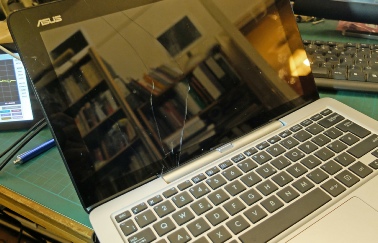
This laptop/tablet combo got dropped and the screen broke. I didn’t get round to getting a quote for repairs and eventually I took it apart to see if there was anything useful inside!
The only thing which immediately grabbed me were the batteries and I thought I might be able to use them in a phone charger or power supply.
Lithium polymer batteries need a charging device to make sure that they get charged properly and don’t go bang!
Researching the web pages of the usual suspects suggested that the Sparkfun Battery Babysitter would do the job monitoring and controlling both charge and discharge of the battery and, hopefully, avoiding any Dreamliner or Galaxy Note 7 type incidents! This module has an I2C connection which can transmit details of the battery condition, the current being drawn etc.
The nominal output voltage of the batteries is 3.7 volts (although it is over 4 volts when fully charged). A voltage step up regulator is required to provide 5 volts for charging a phone or powering a Raspberry Pi or an Arduino. For this I went for a Pololu module which I have used before in another project.
It just requires putting the bits in a box with a switch to select battery one or battery two.
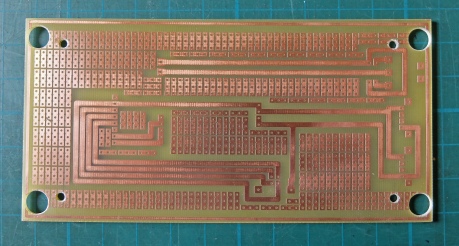
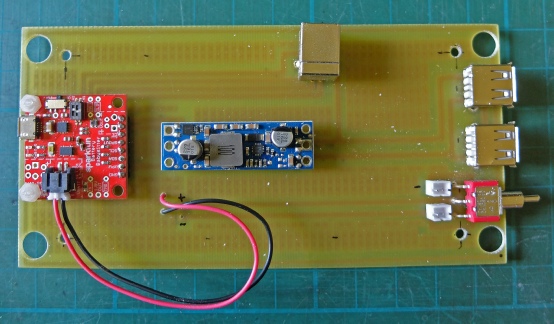
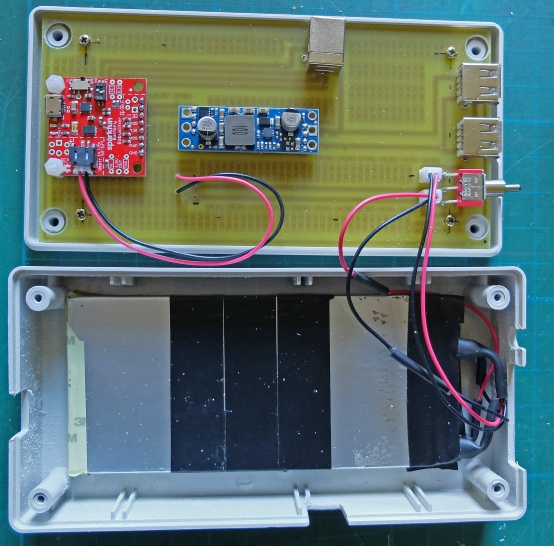
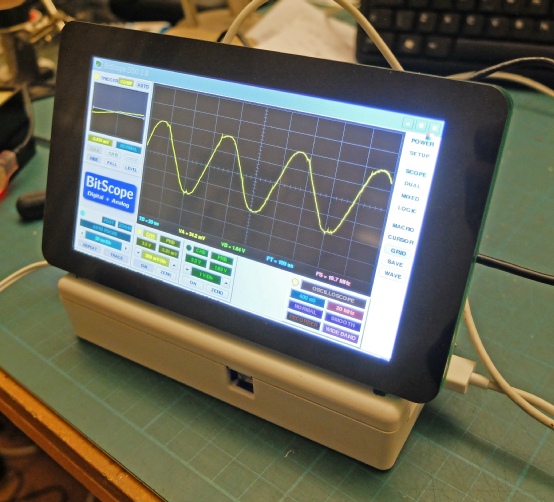
I made a PCB to solder the modules onto. To keep the box reasonably shallow, I soldered the modules directly onto the PCB using headers. I like to use sockets so that I can easily recycle bits into new projects in the future but in this case it wasn’t possible.
The extensive prototyping area saves on etchant. I won’t drill these out unless I have to.
The PCB is populated with the modules and some USB sockets I managed to remove from a old USB hub. The two JST type sockets for the batteries I got some time ago on eBay from China along with some plugs. The plugs turned out to be just slightly too big for normal sockets. No wonder they were cheap!
This socket is the I2C connection
USB sockets
Sockets for the batteries
Sparkfun Battery Babysitter
Pololu step up regulator
Switch to change batteries







Batteries taped together.

It took some research to find a suitable box. Rapid Electronics have a very good range but there doesn’t seem to be any easy way of searching other than just ploughing through the catalogue.
The Raspberry Pi with its 7 inch touch screen perches reasonably well on the power supply.
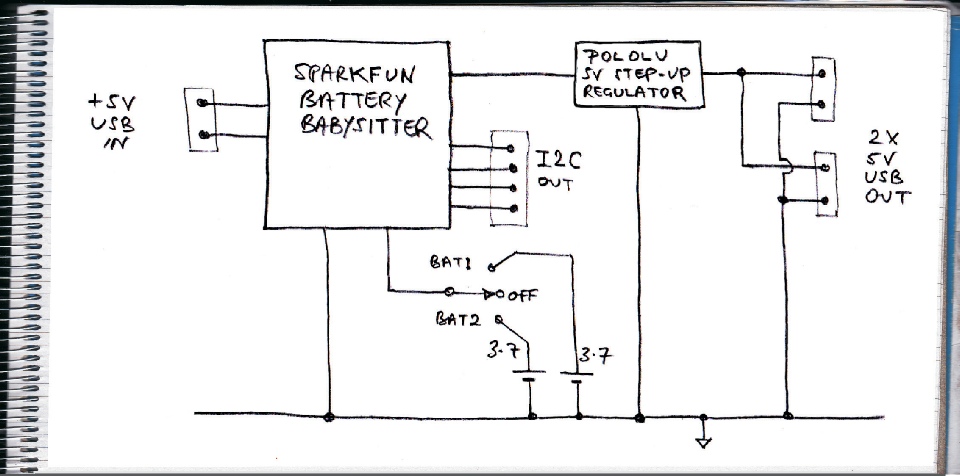
Circuit diagram